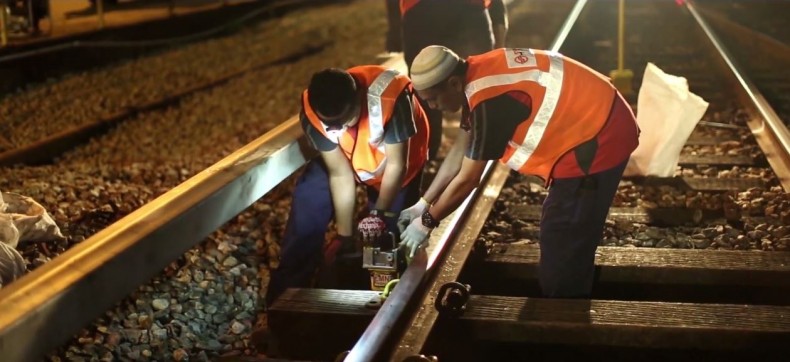
“I just want to go home for dinner.” This was a constant refrain on many Facebook feeds when a rail service breakdown during the evening rush hour on July 7 left 250,000 commuters stranded.
Two of Singapore’s oldest and most heavily used lines, the North-South and East-West lines, were crippled for more than two hours in the worst train disruption since December 2011.
A fresh round of criticism was heaped on train operator SMRT Corporation. It has come under fire recently for sporadic service delays and lax security, after three cases of trains being vandalised in the past four years.
Reactions on the ground were immediate and intense. Prime Minister Lee Hsien Loong expressed concern over the disruption and visited the SMRT Bishan depot and Land Transport Authority operations control centre the day after the breakdown for an update. Opposition parties said they were deeply worried about the resilience of Singapore’s transport system. Members of the public took to social media to vent their frustration.
The gamut of reactions was understandable given the major inconvenience to commuters. But on another level, it revealed the extent to which the MRT system matters to Singaporeans, not only as a form of transport, but also as a touchpoint for the nation’s success since independence.
In an Institute of Policy Studies (IPS) survey on Singaporeans’ perceptions of our history conducted between August and October last year, eight in 10 of 1,516 respondents said they were aware of the official launch of the MRT in 1988. Fewer respondents said they were aware of more recent events, such as the uncovering of the Jemaah Islamiyah terrorist plot in 2002 and the crash of Singapore Airlines Flight 006 in Taipei in 2000.
Of those who were aware of the MRT’s launch, nine in 10 said it was important to them, and thought it was important to future generations. The launch of the MRT was ranked as the most positive event in the list of 50 historical events shown to respondents.
Further analysis of the findings suggests the launch of the MRT is thematically similar to the opening of Changi Airport in 1981 and the formation of the Housing and Development Board in 1960. Major infrastructure projects ranked high on the list, as did symbols of nationhood such as the creation of the National Pledge and the composition of the National Anthem. In fact, Singaporeans polled in the IPS survey ranked these events higher in importance than other significant events such as the formation of the People’s Action Party in 1954 and racial riots of 1964.
Emblems of national pride
Why does the MRT matter to Singaporeans? Beyond being a means of transportation, the MRT system represents Singapore’s journey from Third World to First. The MRT, Changi Airport and public housing estates are uniquely Singaporean emblems of national pride.
Indeed, the history of the Republic’s public transport system mirrors The Singapore Story and the spirit of the pioneer generation in the uncertain days following independence in 1965. Despite widespread scepticism and against the recommendations of international transport consultants, then Communications Minister Ong Teng Cheong, who would later become Singapore’s fifth President, pushed through with the plan to build the MRT system. Parliamentary debates centred on its hefty S$5 billion cost and competing recommendations to opt for an all-bus system.
Mr Ong convinced the Cabinet that an all-bus system would be inadequate due to the increasing problem of road congestion and that building a rail system would be a better solution in the long run. The inaugural MRT service in 1987 was well received and more than 120,000 commuters turned up to experience the new mode of public transport — even though it covered only five stations, from Toa Payoh to Yio Chu Kang.
Hence, it is not surprising that the same IPS survey found that the major MRT disruption of 2011, with breakdowns during the morning and evening peak-hour period over two days, was viewed negatively. More than seven in 10 of survey respondents said the 2011 MRT breakdown was important to them and eight in 10 felt it would be significant to future generations.
Given that the recent MRT breakdown was more severe than the 2011 incident, it is likely to have a longer-lasting impact in public discourse for years to come. A major breakdown in the public-rail system blemishes Singapore’s reputation for efficiency. Tellingly, on the night of the breakdown, one of the most re-posted comments on social media was a remark by a tourist saying the MRT failure was not what he had expected in this efficient city-state.
There is no doubt the MRT system has improved the lives of Singaporeans, and will continue to do so with new rail lines in the works. There must be greater effort in upholding the efficiency of the system. SMRT should focus on improving its breakdown response and recovery protocol. It should clearly state alternative routes when trains are not running and provide more free shuttle buses at MRT stations.
Positive perceptions of the MRT, an integral part of our national history, must be preserved, along with “moving people” and “enhancing lives”.
Varian Lim and Elaine Ho are Research Analysts at the IPS Social Lab, a centre for social indicators research at the National University of Singapore. This piece was published in TODAY on 21 July 2015.
